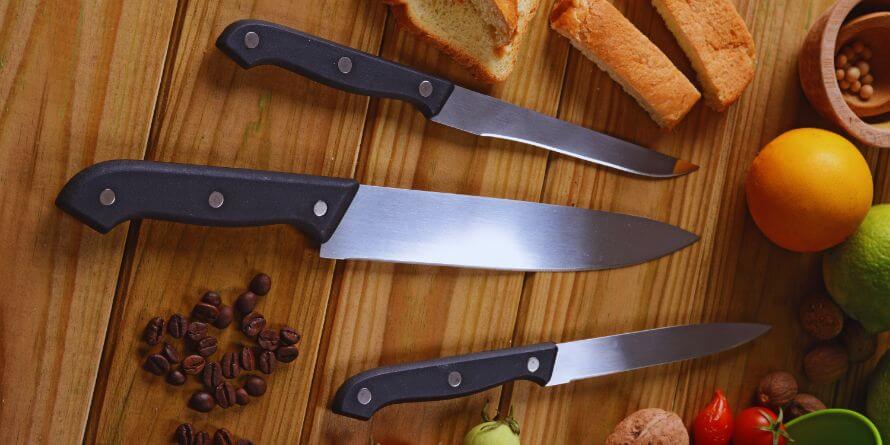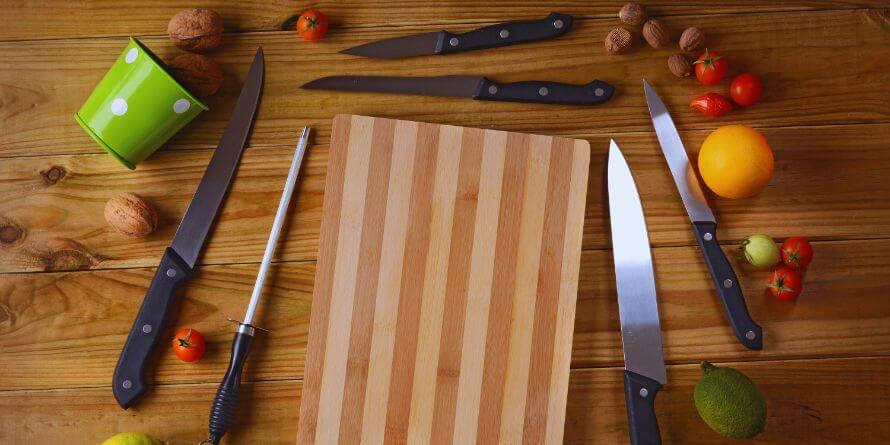Sharp knives are crucial to completing cooking tasks speedily and efficiently, as a sharp knife gives clean cuts without requiring much force. Conversely, cutting veggies with dull knives is like cutting through concrete, which requires much effort.
Sharp knives boost users’ safety by reducing slipping and rough cutting; neatly cutting herbs and tough veggies allows users to complete kitchen tasks smoothly without being overwhelmed.
Precise and controlled cuttings make the cooking experience enjoyable and effortless. Because sharp knives offer multiple benefits, keeping them maintained and workable is essential.
Whetstones are valuable tools in this context, helping to keep the knives sharp and rust-free, but everything depends upon selecting the right grittstone.
These sharp stones are made from different abrasive materials and help make steel tools sharp, especially knives keen to cut veggies. This guide will explore the Kitchen knves grit whetstone in detail.
What Grit Whetstone for Kitchen Knives
Explore the best grit whetstone for kitchen knives and the best grit whetstone for chefs, their selection criteria, and maintenance tips. If you are a senior citizen which types of kitchen gadgets are needed?

Understanding Whetstone Grits
Before you explore the best grit for kitchen knives, let’s look into the grits. The grits are those mentioned numbers that determine the abrasive particles on a whetstone.
The higher numbers indicate that the tool is perfect and aggressive to sharpen knives. While selecting an optimal grit for knife sharpening, the user should know enough about grit because it means wasting time without proper knowledge.
The simple formula to ensure the tool efficiency is higher the grit number, the finer the particles, and excellent to sharpen the edges. Whetstones usually come in three grit ranges: coarse, medium, and delicate.
The coarse category is for fixing and reshaping the knives, the medium is for regular sharpening, and the acceptable type is for polishing tiny particles.
Whetstone grit levels for kitchen knives
Coarse Grit (200-400):
This grit is helpful in severely damaged knives’ edges, as the tool helps remove heavy metal and reshape the cuts and chips on the blades. Its rough surface contains heavy abrasive material, which reshapes the blades’ kinks.
However, this grit is not ideal for regular reshaping because excessive pressure can damage the knives’ edges.
Medium Grit (500-1000):
This grit range is for sandpaper, which is used to polish surfaces for final finishing after coarse grit. It smooths things without using excessive metal and is used to sharpen minor performance hinders of kitchen knives.
Users can use this grit range in daily maintenance as the sandy texture of this tool smoothly enhances performance without using metal and sharpens edges without reshaping the entire shape.
Fine Grit (2000-8000):
The silicon carbide formation of this sandpaper made it a multidimensional tool used in polishing surfaces and achieving a razor-sharp finish for kitchen knives.
It removes minor defects and scratches from edges and is used after medium grit to get the final refined edges of kitchen knives.
Types of Whetstones

Waterstones
These sharpening kitchen knives grit whetstones are actually sharpening stones that use water for lubrication, and their soft abrasive material works with water to create a slurry.
Their numbness reshapes the metal and enhances its edges by removing clogging. Waterstones have several benefits, such as their effective cutting action, which is helpful to sharpen knives quickly.
Moreover, their surface is easy to flatten, and various grits in Waterstones provide refined tools by sharpening coarse to fine. However, Waterstones has many benefits but also some barriers to use.
For example, they require soaking 10-15 minutes before use and can wear out soon due to their delicate composition.
Oilstones
Unlike Waterstones, these knife-sharpening grit whetstones use mineral oil as their lubrication, which keeps the surface clean and friction-free and provides a quick sharpening action.
The oil layer prevents metal clogging on the stone surface and boosts the sharpening process without damaging the blade. Oil Stones are more durable than waterstones and smoothly perform their action without friction.
They don’t require a soaking step before use, but frequent oil application can make the stone messy and more complicated to clean.
Diamond Stones
This kitchen knife maintenance grit whetstone catalog is more durable than the previous two and is considered the best sharpening tool due to its efficiency and long-lasting composition.
The diamond abrasive coating on these stones quickly sharpens the knives without applying water or oil lubricant. However, some users prefer to add water for enhanced performance.
The diamond stones have a fast cutting speed, which makes them ideal for reshaping the kitchen knives’ edges. They don’t need much maintenance and can be used without soaking in oil or water.
For having competitive durability and better performance, diamond coating makes these stones more expensive than other types.
Step-by-Step Guide to Sharpening
Step 1: Before starting the sharpening process, the Waterstones should soak in the water, preventing drying and delivering a smooth experience. After the bubbles stop, the stones become ready to use, but a direct sharpening process can be started with diamond or oil stones.
Step 2: The sharpening process should be performed at a right angle, which provides the best results and maintains the knife’s longevity. Twenty degrees is the standard angle for kitchen knives; however,
Japanese-style cutting tools need 15 to 17 degrees. A 25-degree angle is suitable if users want to sharpen heavy-duty knives.
Step 3: The process should start from a coarse grid if the knife’s edge has visible nicks and performing dull cuttings.
The sharpening process is performed by gently running the edge across the stone from the blade’s base to the tip with a constant forward motion. 5 to 10 strokes are enough with alternate sides to remove all clogging.
Step 4: The knife must be swept on medium grit to get a refined edge after removing the dust and clogged particles. The angle must be the same, and repeated motion should also be the same to maintain the blade’s shape.
Step 5: The last step is using the fine grit for a sharp, polished edge. It needs a few strokes with lighter pressure leads to remove the microscopic burrs and give a smooth, shiny edge with faster performance.
Grit whetstone sharpening tips
- Knives need regular care to maintain their performance. For example, light knives must be sharpened within 6-12 months, whereas daily-use tools need monthly maintenance to remove clogged materials.
- We should use knife blocks, magnetic strips, or drawer inserts to avoid dulling and damaging the knives. Blade guards are also helpful in protecting the sharpness of knives and preventing accidental cuts in storage.
- Users should rinse whetstones before and after use, and water-based stones should be soaked in water before use. After sharpening, the stones must be cleaned with water and a soft brush.
Final Analysis
Every knife and whetstone requires personalized care, which depends on users’ handling and practices. Each individual should learn the basics of selecting the right grit for knives and maintaining tips according to the manufacturing material.
Sharpening knives yourself is an art and skill that improves with continuous practice. Therefore, everyone should invest time in learning the basic steps and perform them frequently to maintain knife sharpness.
Keep in mind that top whetstone grits for knives are those that suit you best regardless of their cost and functionalities.


